Caravan weights explained – the balancing act…
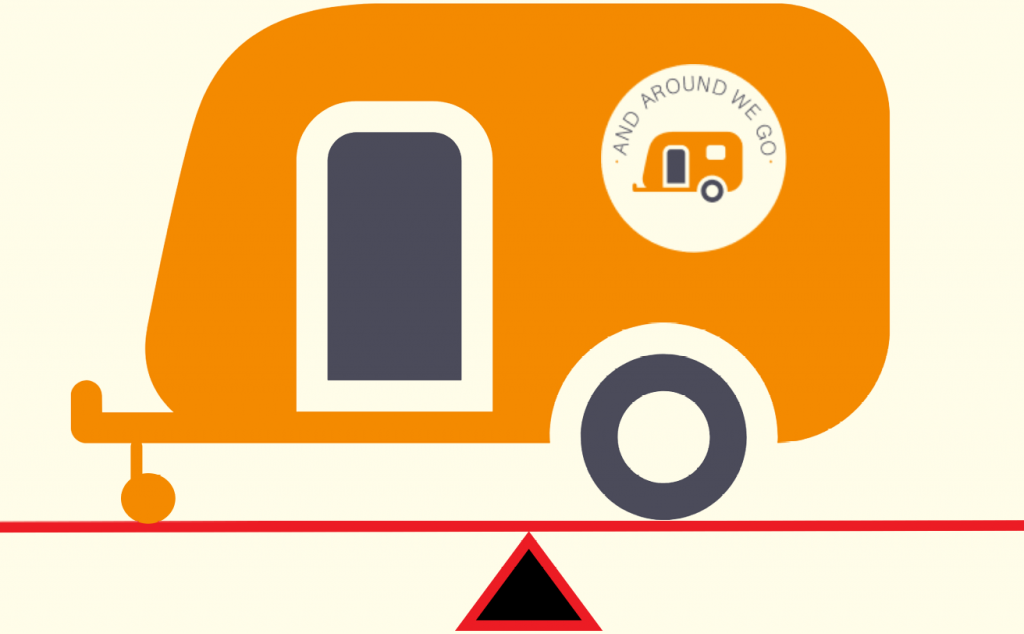
GVM, GCM, ATM, GTM, TBM etc etc..
Do you know what these are?
Are yours within specifications?
Lets dive in!
Apologies up front, this is a very wordy post, but there is no easy way around that! I hope this makes sense and look forward to any feedback.
TARE: (Car or Caravan)
Tare is the empty weight of the tow vehicle or caravan as specified by the manufacturer. When referring to the tow vehicle, this is factory standard, ready to drive, only 10L of fuel on board, no driver or passengers or accessories. When referring to the Caravan, this is as it left the factory including all factory options ordered (beds, awnings, second batteries etc), but no after sale accessories fitted by the Dealer like a Satellite Dish, or any water, food, clothes etc.
Kerb (or Curb) Weight: (Car)
One that is used occasionally is Kerb (or Curb) weight. This is the weight of the vehicle with a full tank of fuel, no driver, no accessories (like tow bar, roof racks etc), no luggage and no passengers. Remember that fuel is also lighter than water, about 0.74kg / L for petrol and about 0.84kg / L for diesel.
GVM: (Car)
The GVM is the Gross Vehicle Mass and is listed by the manufacturer as the absolute maximum weight of the tow vehicle. This includes all accessories, all passengers, fuel, windscreen washer fluid, luggage, tow bar, and most important not to forget, the Tow Ball Mass of the caravan. If you drive you car wheels only onto the weighbridge, with the caravan attached but off the bridge, this is what you are measuring.
Payload: (Car or Van)
This is simply the difference from the Tare Weight to the Maximum Weight, or in other words how much stuff you can stuff in. For many tow vehicles this usually around the 600 to 700 kg mark and includes everything that is not included in the Tare. Remember above we mentioned the Tow Ball Mass is counted in the Tow Vehicle, so lets look at our car, the Jeep. We start with 609kg Payload, 270kg ball weight, approx 40kg for the tow bar (includes WDH), additional 70kg Diesel (83L), 140kg for Driver and Passenger. We are up to 520 already and the car is empty. I also have 40kg step sliders so 560kg and also have a bout 20kg of general gear, leaving a not so big 29kg available.. As you can see, no room for Fridge, drawers, roof top tinny, kids, luggage etc. Unfortunately a great deal of people towing larger vans will very easily be over the maximum car weights without realising it.
Maximum Towing Weight: (Car)
This is the maximum weight your tow vehicle can PULL. I have used the word Pull instead of Tow to try and reduce any confusion. Some discussion has been noted whether this includes Tow Ball weight, whether it refers to the caravan ATM etc. This is simply the maximum total caravan or trailer weight you can legally pull with this vehicle. Note this is the weight as it is when you are towing it. So if your tow vehicle is a max 3500kg towing capacity and you have a car trailer that rated at a maximum 4500kg (obviously when there is a car on it), you can legally tow this trailer as long as when you are towing, it is not over 3500kg. So a light car, an empty trailer etc is not a problem. There has been some Facebook mis-truths going around about this.
Just to add to this, recently in conversation, a retired vehicle inspector from NSW advised that the NSW police were ‘instructed’ if they pulled over a vehicle and the ATM of the trailer or caravan was higher than the max tow of the vehicle and they had no scales, to defect the vehicle for being over weight and it was then up to the driver to prove they were legal. Sounds like a very dodgy act by the police, but I can not confirm nor deny this so thought I would include for your information.
Axle Weight: (Car)
The tow vehicle will also have a manufacturer maximum weight you can carry on the rear and front axles. In general you will never get near the front limit as the loads are always from the middle to the back. Passengers in the middle, cargo in the back and Tow Ball weight right out behind. Rear Axle weight is one of primary concern to those towing large caravans due to the tow ball mass and the leverage multiplier. The leverage effect is quite pronounced, being between 1.4 and 1.5 to one on average (SUV type vehicle at the lower end, the Ute style usually towards the higher due to the longer distance from towball to axle). So at 1.4:1, a 300kg ball weight adds 420kg to the rear axle and removes 120kg from the front. This is where, if suitable, you may need to use a Weight Distribution Hitch to help spread the load better.
TBM: (Car and Caravan)
The Tow Ball Mass is the weight the caravan tow hitch exerts downwards on the tow ball of the tow vehicle. The Caravan factory TBM is documented on the Caravan ID plate – however that is only what it measured when it left the factory – well that’s what it is supposed to be (sometimes it will also have the max allowed for the van). It will never, ever be this figure again! As you load up the van they will generally end up heavier at the front simply due to the design – specifically to keep an adequate ball weight for stability. In Australia, the general consensus is to have around 8 to 10% of the trailer/caravan total weight on the tow ball. So for a 3.3 tonne caravan, that would between 264kg to 330kg. The lighter the tow ball mass, the lower the speed that uncontrollable caravan sway may start to happen. However too high a tow ball mass and you upset the dynamics of the tow vehicle – the tow ball being pushed down is levering on the back axle to lift the front axle as mentioned in the Axle Weight section. This reduces the steering and braking efficiency and can lead to massive understeer in an emergency (under steer is when you turn the steering wheel and the car keeps going straight or at least doesn’t turn as much as it should).
The tow vehicle manufacturer will also have a maximum allowable tow ball mass for the vehicle. As a general rule of thumb it is usually 10% of the maximum towing weight, but always check the manual to be certain.
ATM: (Caravan – also confusingly known as GTW)
Aggregate Trailer Mass, or total weight of the caravan. This is the caravan stand-alone on a weigh bridge, counting the weight on the wheels and the weight on the tow ball (or Jockey Wheel). This is listed by the manufacturer on the compliance plate as the absolute maximum weight the caravan can be. If you are over this weight and you are pulled over and checked, you may be fined and asked to remove things until you are back within the legal weight limit.
As mentioned in the heading, this can sometimes be referred to by some vehicle manufacturers as the GTW or Gross Trailer Weight and is not to be be confused with GTM covered below.
GTM: (Caravan)
Gross Trailer Mass is the total weight of the caravan on the wheels only, excluding the tow ball weight. If you drive just the caravan wheels onto the weigh bridge this is what you are measuring.
GCM: (Car)
And one final one, the Gross Combination Mass – this is the total weight of everything, car + Van + passengers + luggage etc etc. This is listed as a figure by the tow vehicle manufacturer as a maximum limit you can not exceed. This one can be tricky as some manufacturers, especially many Utes claiming 3.5t towing, often have the GCM well below the maximum GVM plus maximum Towing capacity.
So now you know what all the abbreviations mean and what you maximums are for each weight, how do you go about measuring them? Its actually not too hard to measure, there is only 4 measurements then you need to work out the rest. Firstly, load up the van and the car with everything you think you need, including full tank of fuel, the family, the water tanks, gas bottles, food, drinks, kids, toys etc then head off down to the nearest weighbridge.
Now follow the diagrams and descriptions and write down the following measurements:
Measurement 1: Drive the front car wheels on only and record weight
(Do this twice, with WDH connected and with it disconnected)
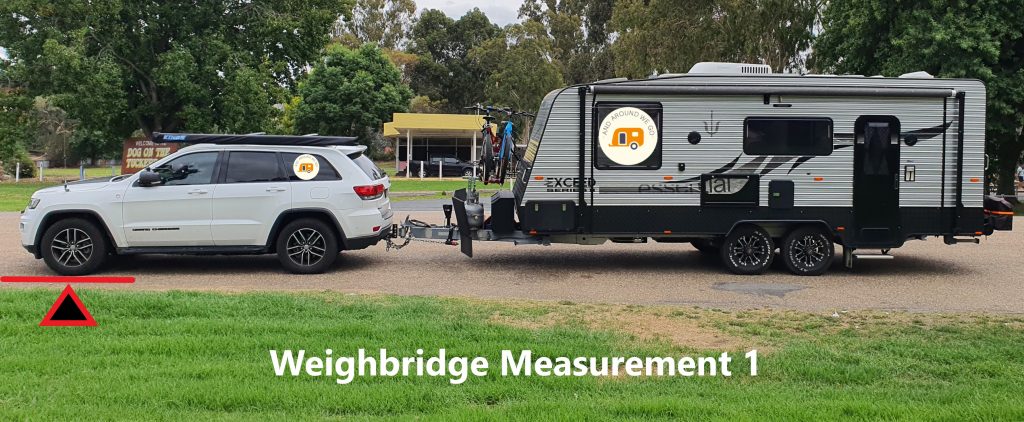
Measurement 2: Drive further forward until the rear vehicle wheels are on as well, making sure jockey wheel is behind the weighbridge and record weight
(Again, measure this with and without WDH)
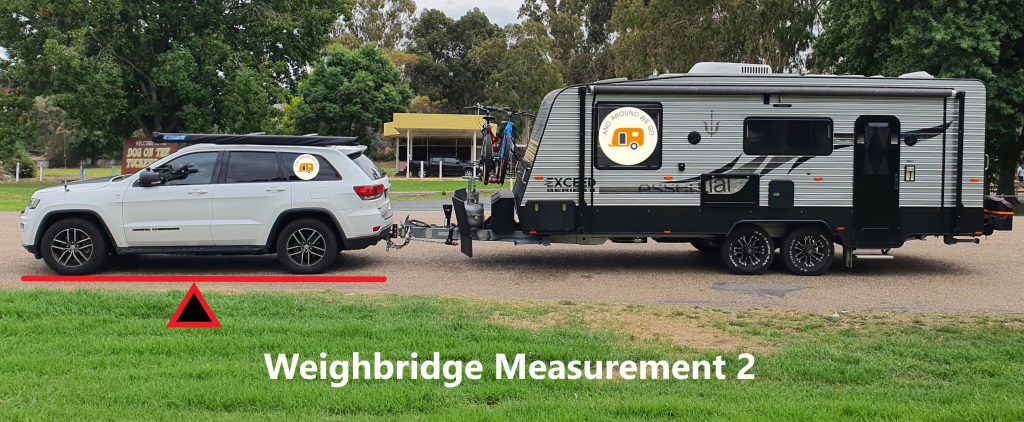
Measurement 3: Lower the jockey wheel and remove the weight from the tow ball, record weight.
(release WDH if fitted to get accurate measurement, wind jockey wheel down until tow bar rattles/loose)
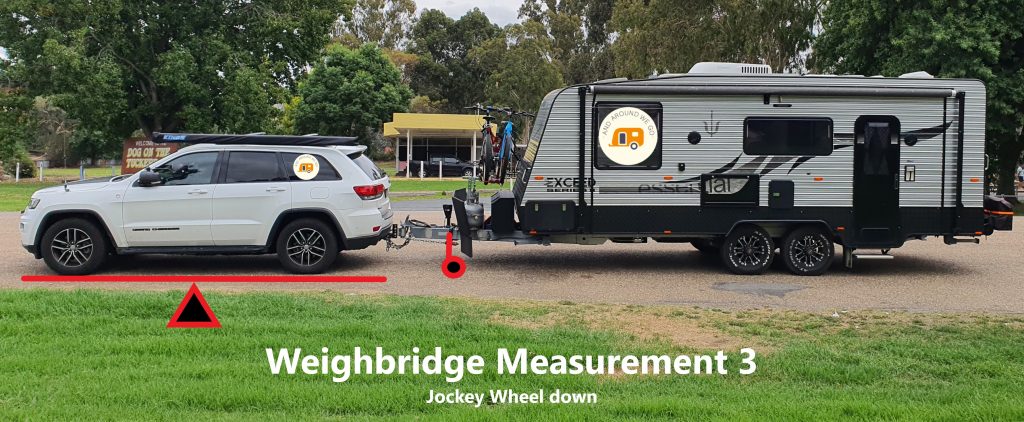
Measurement 4: Reconnect van and lift jockey wheel up, drive forward until car and van on weighbridge
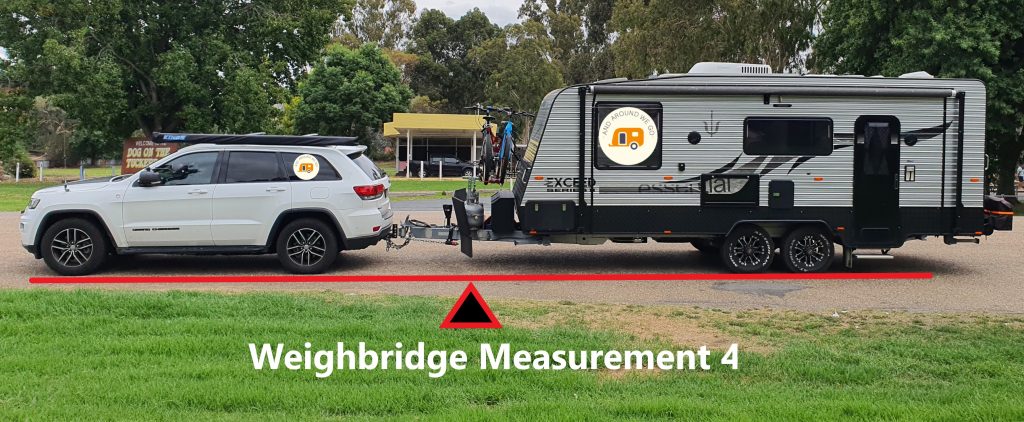
Notes:
- If you currently are using a WDH, take the above measurements with the WDH connected to make sure the rear axle weights are within limits.
- If you want to see the effect of the WDH, when you have measured the Front Axle Weight, release the WDH and measure the Front Axle Weight again, this will then give you the ability to calculate front and rear axle weights with and without the WDH.
- In step 3 where you lower the jockey wheel you will need to disconnect the WDH to get meaningful readings.
Calculations:
- Front Axle Weight = 1
- Rear Axle Weight = 2 – 1
- GVM = 2 (includes Tow Ball Mass)
- TBM = 2 – 3
- GCM = 4
- GTM = 4 – 2
- ATM = GTM + TBM (or 4 – 3)
Example:
This is the figures for our Jeep and van as pictured above:
1= 1240; 2= 2930; 3= 2660; 4= 5950
So using those figures I can see my:
- Front Axle Weight is 1270 (Jeep max 1452)
- My Rear Axle Weight is 1660 with WDH fitted (Jeep max 1678)
- GVM is 2930 (Jeep max 2949)
- TBM is 270 (Jeep and Van max 350)
- GCM is 5950 (Jeep max 6099)
- GTM is 3020 (Van max 3200)
- ATM is 3290 (Van max 3355)
The Maximum figures quoted above are either from Jeep or the caravan compliance plate.
If you would like a downloadable copy of this document, click the link below for a PDF version!
So how did we manage to get to the above ‘just legal’ weights – well I can tell you it didn’t just happen. Initially we had the portable fridge in the back of the Jeep along with some tools and other bits and the ball weight was just over 300kg. At that point the Jeep was a good 60kg over weight. Fortunately the van was a couple of hundred kg under weight! So the tools were relocated to the rear cupboards in the van, the portable fridge sits on the van floor for traveling, just in the door way as you enter (halfway between the axles and the rear of the van) and a few things under the bed were removed and left at home (bed is at the front of the van). After that we also added some Jerry can holders to the rear for diesel for the heater and spare for the car.
Overall the relocation out of the Jeep and reduction in ball weight dropped the car total weight about 80kg, enough for the Jeep to come just under whilst still keeping the van under its max. However the Jeeps rear axle was still over the max so that’s where the WDH comes into play, transferring some of the rear axle weight to the front axle. I have another post on WDH to explain this process in more detail, click here if you would like to read that one.
So now the Jeep itself only carries us and some lightweight gear like snorkel and flippers, towels, hats and the Drone. That’s about it.


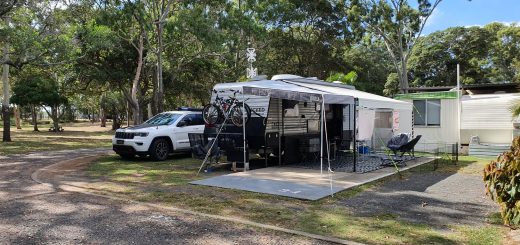

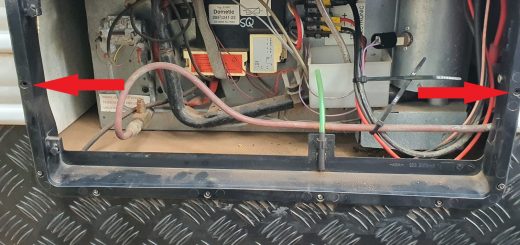
Great stuff, do you have any guide to minimum axel weight for the front, maybee stated as a percentage.
Hey David, a weight distribution hitch will help transfer back some of the weight lost at the front wheels caused by the tow ball mass, and setup guides generally say to return around 50% of what was lost. So if you dont have self adjusting suspension (or can disable it), measure the front tyre to guard height without the van attached, then attach the fully loaded ready to go van and measure the front tyre to guard height again. Now install the WDH and adjust the tension to reduce the gap increase by half.
That said, the manufacturer of the tow vehicle will stipulate a maximum tow ball weight and max rear axle weight. If you are within these weights then the manufacturer believes control will still be adequate, they may then state whether a WDH should or can be used. Jeep for example were saying that over 2250kg caravan a WDH was mandatory to retain proper vehicle dynamics and control (*they have since reduced this to recommended).
Hope that helps, Cheers, Dave.
Good stuff. Be great if this was a PDF you could print out.
Hey John, it sounded like a good idea! I have added a dowloadable PDF version at the bottom of the post. Cheers, Dave.